
We finally get a sunny day and a break in the temps and folks start to have visions of the Jersey Shore dancing in their heads. Nothing could be more emblematic of the beach than a lighthouse – in this case, the Cape May Lighthouse, constructed in 1859. Fully restored and open to the public since 1988, this stalwart sentinel of the Jersey Cape is the very epitome of a historic preservation success story. -JMc, Editor
CAPE MAY LIGHTHOUSE, CAPE MAY, NEW JERSEY
by Harlan B. Radford, Jr.

One of the largest lighthouses on the Atlantic Coast standing at 157 feet, Cape May Lighthouse still serves as an active aid to navigation. It was built in 1859, succeeding two previous lighthouses that were lost to the sea by erosion. The lighthouse is located at the southern-most tip of Cape May Peninsula in Cape May County, New Jersey, and is geographically positioned where the Delaware Bay meets the Atlantic Ocean.

The early attempts to build lasting lighthouses along New Jersey’s coast have proved costly and unsuccessful. As we have seen in the case of the Barnegat Lighthouse, the Cape May Lighthouse was no different. Erosion, lack of proper maintenance, and poor construction have been among the culprits that have thwarted the early efforts to build these navigational beacons.
The first known lighthouse at Cape May was built in 1822 and came to life the following year. Standing 70 feet tall, this particular sentinel did not last beyond 1847 when it was decommissioned due to its collapse into the ocean.
Then a second tower was constructed a bit further inland and was operational between 1847 and 1859 whereupon it too was overcome by storms and the constant battering of waves.
A third lighthouse which is the present lighthouse was built in 1859 and this time It was set back considerably further from the ocean. In addition to the erosion, the wind at Cape May Point was considered a major problem. To combat the wind this third structure was constructed of double brick masonry walls. Added strength was accomplished by building two concentric walls with the outer wall more than 3 feet thick at the base and the inner wall a foot and a half at its base with a space left between the two.
Shortly after this tower was built, two keepers’ houses were constructed. In 1893, and in order to reduce the risk of fire in the tower, a brick oil house was built for the safe storage of all-important oil supply. By 1902, one of the keepers’ houses was expanded and was able to house three keepers and their families.
The routine for the keepers consisted of their nightly 4-hour watches spent in the watch room situated just below the lantern. During a watch the keepers were responsible for rewinding the clockwork weight mechanism, trimming the wicks when needed, replenishing the fuel or the oil level in the lamps, actually lighting the lamp a half-hour before sunset, and extinguishing the lamp a half-hour after sunrise. When there was limited visibility, the lamps had to be lit.
There were numerous other duties such as carefully and frequently cleaning the lamp as well as general maintenance of the property to keep everything in good working order. Clearly, being a lighthouse keeper back in the day carried a great deal of responsibility.
Another important feature of the lighthouse is the lantern which is the enclosed or roofed-over room completely surrounded by windows. This housing most importantly protected the entire light apparatus including the lens and the lamp. The lantern itself was 12 feet high with 16 large glass windows and a diameter of 12 feet.
The actual lens originally was a first-order revolving Fresnel lens and this was state-of-the-art for that time period. Seacoast lights of this era stood 7 feet 10 inches tall with a six-foot diameter which enabled the keeper to actually access the inside and service the lamp itself. Today that very Fresnel lens is on display at the Cape May County Historical Museum, which is located a short distance in the nearby community of Cape May Court House.

Today, Cape May Lighthouse bears its characteristic solid white daymark paint job in order to serve as a daytime identification aid allowing mariners to distinguish between the lighthouses.
The beacon flashes every 15 seconds with a range of 24 nautical miles. There are 217 steps from the ground to the top and access can be made by a cast-iron spiral staircase.
In 1938, the lighthouse was updated and electrified and when World War II commenced in 1941, the light was extinguished for the duration of the war. In 1946 the Fresnel lens was dismantled and replaced by another but updated light unit. After 56 years of service yet another more modern and efficient light beacon device was installed in 2002. That light continues in operation today thanks mainly to ongoing maintenance by the U. S. Coast Guard.
In 1973 the Cape May Lighthouse was added to the National Register of Historic Places. Then, in 1986, the Cape May Lighthouse underwent a much needed major restoration project. Presently the lighthouse is owned by the State of New Jersey after ownership was transferred from the U.S. Coast Guard in 1992. The State, in turn, leases the structure and grounds to the Mid-Atlantic Center for the Arts & Humanities (MAC), a non-profit which raised funds to restore the tower and open it to the public in 1988.

Last April 2020, MAC announced that COVID-19 restrictions had canceled its tours, activities, and events until further notice. Since its budget is largely dependent upon admissions, memberships, and donations they will appreciate your support.
Starting March 13, 2021, the lighthouse is open on Saturdays and Sundays for an admission charge from noon-3pm and is open daily beginning March 26 at reduced capacity. Climbs to the top are rewarded with spectacular panoramic views. If you can’t go in person, take MAC’s virtual climb. The Oil House on the grounds contains a fully accessible Visitors’ Orientation Center and Museum Shop.
Get the latest on their activities and hours open on the official Facebook page for Cape May MAC. No matter where you are, you can celebrate Cape May with the virtual tours and educational lecture series on Cape May MAC’s YouTube Channel.

The following selection of picture postcards shows the important role and the prominence of this lighthouse to Cape May, New Jersey. It certainly can be said that this is a place where memories last a lifetime!


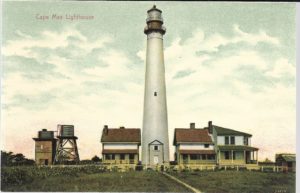
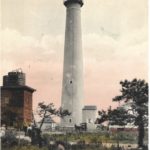






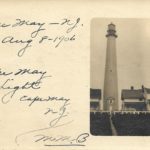


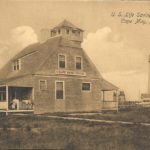

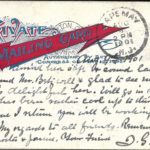
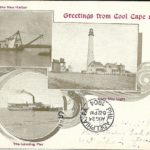



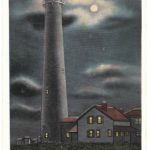
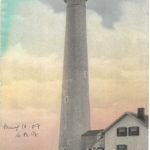
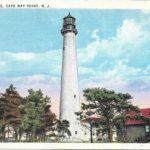



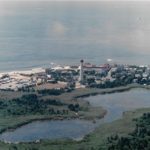



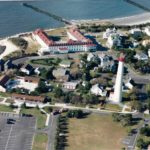






Great Pics an old friend from way back in N Y is one of the keepers.
the light house is located in Lower Township
Why couldn’t we see the lighthouse light in the fog tonight July 29, 2022 We were at the Cove restaurant area and were looking for the light, specifically because of the fog. It didn’t appear to be on.